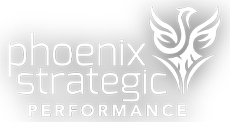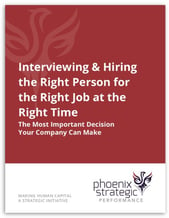This blog was co-authored by Joanne Flynn, Jim Bosserman, and Debbie Gower. This article combines perspectives and research from three strategic performance and learning and development professionals.
Part 5 – Learning & Development Series
“In the end, we expect our people capability to improve and our results to be better.” - said David Novak, CEO of YUM! Brands
How many other leaders have utilized learning to improve the performance of their business as effectively as David Novak? It is our observation that while many have utilized learning as a catalyst for improving business results, there are other leaders who, in looking back, would observe that they wished they had spent more time and effort on improving the capability of their workforce.
In this case study, the role of learning and development (L&D) varied through the four transformations, and the business results were dramatically different. It’s not uncommon for businesses to be distracted and forget about the power of learning to help improve performance and accelerate the pace of change of the business and its people.
Our observation is that learning is not an expense but an investment in the future of your people and your organization. As David Novak found throughout his career, there is a significant ROI on the investment in an aligned, dynamic, and well-structured learning effort. Other leaders also feel the same.
Jack Welch has been famously quoted, “An organization’s ability to learn, and translate that learning into action rapidly, is the ultimate competitive advantage.” Pair that sentiment with “Giving people self-confidence is by far the most important thing I can do. Because then they will act.” Indeed not many criticize what Welch accomplished with this mindset during his leadership tenure at GE.
Recently, the CFO of a very successful privately-held business, Dave Baldwin, stated: “I think when an organization has several "individuals" that are good learners, that group can help change the culture of the organization to a "learning agile" culture. The smart thing about this is that with teams motivated to learn, each individual can learn far more working with their team members on business challenges/problems and thus learning far more from each other than they could individually. With a good team, it can happen very naturally.”
All of these business leaders directly comment on the potential for L&D to impact the performance of the business directly. The message is clear. The Learning Function must partner with the company to build dynamic and enabling L&D constantly focused on helping the industry achieve results.
People can do amazing things when you touch their “minds and hearts.” But first, utilizing learning to improve the performance of the business starts with:
- having a vision for the learning effort,
- making it a business priority, and
- aligning the effort with the business strategy and needs of the workforce.
Sounds simple? To be effective, L&D has to be specifically focused and relevant to the needs of both the business and its people, but that’s not always easy to achieve, given the pace of business. What business is not dynamic and changing these days? Not many. Therefore, your L&D efforts need to be dynamic, which requires the business to work closely with L&D.
Further, you need to expect that business strategy and needs will change over time. Learning must also be ever-changing when supporting the business strategy and its requirements. There are too many legacy programs that were great ideas at one time and helped support past successful outcomes, but now they have exceeded their expiration date.
Even though it can sometimes be like changing a tire on a bus going down the road at 100 mph, it can be done. And if done well, your business performance expectations can be exceeded, and employees can be highly engaged and satisfied. When you capture the “minds and hearts” of your people, you can make a huge difference in the performance of your business.
To assist, we have provided you with an outline of a high-level solution framework based on our experiences using strategic L&D during periods of change.
Source for Quote: David Novak, ASTD interview on “Taking People with You,” April 9, 2012





